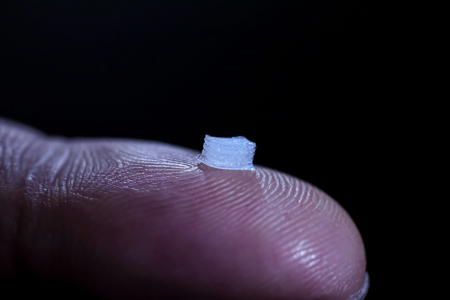August 17, 2018 – University of Minnesota researchers working with 3D printers have made a silicone implant to serve as a bridge when implanted in spinal cords. Serving as a scaffolding for stem cells the new engineered device includes within the silicone matrix neuronal stem cells. States Ann Parr, of the University Medical School, “this is a very exciting first step in developing a treatment to help people with spinal cord injuries.”
So what’s involved in this remarkable medical technology?
- Somatic cells (can be from the skin or other parts of the body) are harvested and re-engineered into neuronal stem cells.
- Neuronal stem cells are 3D printed along with the silicone implant itself.
- The neuronal stem cells when implanted change into neurons bridging the damaged gaps in the spinal cord.
Keeping the stem cells alive was the toughest part of the process. States Michael McAlpine of the University’s College of Science and Engineering, “we tested several different recipes in the printing process. the fact that we were able to keep about 75% of the cells alive during the 3D-printing process and then have them turn into healthy neurons is pretty amazing.”
According to the World Health Organization, every year up to a half million people (40 to 80 cases per million population) are stricken by spinal cord injuries usually from traffic accidents (38%), falls (30%), violent crimes (14%), sports and recreational activities (9%), medical errors (5%), and miscellaneous factors (4%).
Living with a spinal cord injury makes a person 2 to 5 times more likely to die prematurely. Depending on the severity of the injury it can leave a person with a loss of motor control over arms (paraplegia), arms and legs (quadriplegia), and many of the remaining body systems from bowel and digestive function, to breathing.
Spinal cord injuries lead to secondary conditions, often a consequence of immobility which produces deep vein thrombosis, urinary tract infections, pressure sores and ulcers, chronic pain in joints, osteoporosis, and depleted immune systems incapable of fighting opportunistic diseases.
The Dana and Christopher Reeve Foundation estimate the average expense for treating spinal cord injury in the first year ranges from over $500,000 to over three-quarters of a million dollars. This includes surgery, adapting homes to deal with the disability, wheelchairs, medications, physiotherapy, rehabilitation, and mental health counseling. Annual costs thereafter vary from the low $40,000s to as much as $184,000 depending on the severity of the condition.
University of Minnesota researchers involved in developing the silicone-neuronal cell implant aren’t making any promises yet that they can restore full function to those suffering from spinal cord injury. They do believe, however, that the implant can dramatically improve the quality of life for those with spinal cord injuries by helping to alleviate pain and regain some body functions such as muscle, bowel, and bladder control.
A video posted to YouTube shows how the silicone implant is produced.
















